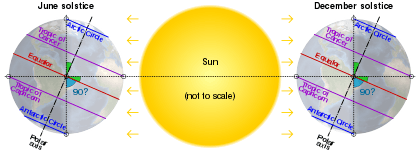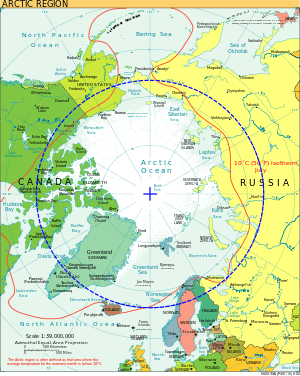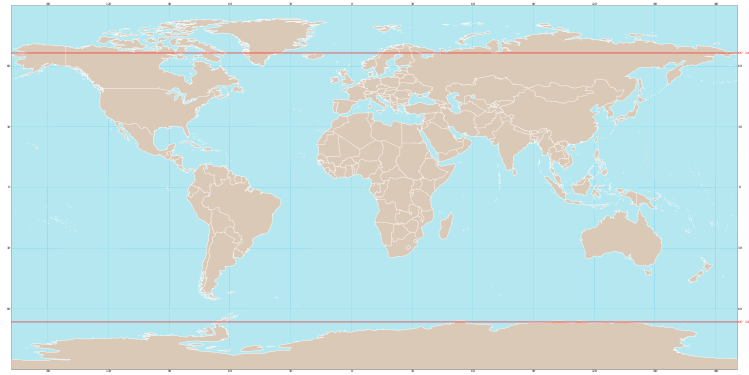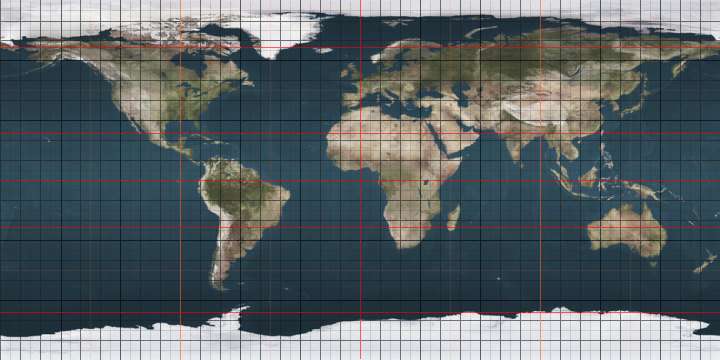Polar circle


A polar circle is either the Arctic Circle or the Antarctic Circle. On Earth, the Arctic Circle is located at a latitude of 66°33′47.3″ N, and the Antarctic Circle is located at a latitude of 66°33′47.3″ S.[1]
Areas inside each polar circle and its associated pole (North Pole or South Pole), known geographically as the frigid zones, would theoretically experience at least one 24-hour period when the center of the sun is continuously above the horizon and at least one 24-hour period when the center of the sun is continuously below the horizon annually. However, due to atmospheric refraction and the Sun being an extended object rather than a point source, the continuous daylight area is somewhat extended while the continuous darkness area is somewhat reduced.
The latitude of the polar circles is 90 degrees minus the axial tilt of the Earth's axis of daily rotation relative to the ecliptic, the plane of the Earth's orbit. This tilt varies slightly, a phenomenon described as nutation. Therefore, the latitudes noted above are calculated by averaging values of tilt observed over many years. The axial tilt also exhibits long-term variations as described in the reference article (a difference of 1 second of arc in the tilt is equivalent to change of about 31 metres north or south in the positions of the polar circles on the Earth's surface).
 The north polar circle on a polar projection.
The north polar circle on a polar projection. The polar circle as lines on an modified cylindrical projection.
The polar circle as lines on an modified cylindrical projection.
Common misconceptions about the Polar Circles
- The Polar night (at the Winter Solstice) does not reach down to the Polar Circle, but some 80-100 km to the Pole of this circle.
- The Polar day (at the Summer Solstice) does not reach just up to the Polar Circle but farther, some 80-100 km more behind this circle.
[2] The main reason for this is that the sun rays bend in the atmosphere of planet Earth, this phenomenon is more obvious to see, at high latitudes.
See also
Notes
- ↑ Obliquity of the ecliptic Archived 2017-06-12 at the Wayback Machine.
- ↑ Swedish Astronomic calendar 2003 (or any other year) at the times of the winter and summer solstices , around 22.June and 22.December
